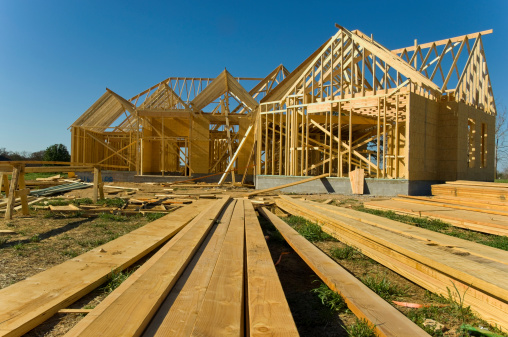Home Depot Inc. (NYSE: HD) managed to outperform the market in 2013. It gained 35%, versus gains of more than 29% for the S&P 500 and over 26% for the Dow Jones Industrial Average (DJIA). The housing recovery and economic recovery are the two drivers, but 24/7 Wall St. wants to evaluate what Home Depot’s prospects are for 2014.
We have been evaluating all DJIA components in a bullish and bearish scenario for 2014. In order to evaluate Home Depot, the same comparative review must be done for Lowe’s Companies Inc. (NYSE: LOW) to get the complete picture. After all, they hold the lion’s share of the home improvement supercenter business in America. Home Depot is worth $115 billion in market cap and Lowe’s is worth more than $50 billion.
There are many macroeconomic factors to consider in Home Depot and Lowe’s. Most Wall Street strategists are forecasting higher price targets for the S&P 500 and Dow in 2014, but will that translate to gains for either or both companies? The Federal Reserve is about to get a new chairman, and the tapering is already on the books for bond buying, so this leaves the rising interest rate risk on the table. Fortunately, U.S. gross domestic product is expected to tick up in 2014.
The outlook for Home Depot is somewhat bullish, with the $87.65 mean target implying close to 7% total returns from the $81.60 price. Its current dividend yield for 2014 is 1.9%, and that should be raised again in 2014. Home Depot’s 52-week trading range is $62.38 to $82.47.
Be advised that these are now all-time highs on the Home Depot chart. We would also point out that Home Depot currently trades at 18.6 times expected calendar 2014 earnings estimates, so it is not cheap considering how cyclical its business is.
The saving grace here is that Wall Street is also valuing Lowe’s at almost 18.4 times expected calendar 2014 earnings estimates. Lowe’s also has a stock chart confirming all-time highs in late 2013, but its dividend is down at 1.5%.
24/7 Wall St. is somewhat cautious here because the current valuations are much higher than the forward estimates. Home Depot is expected to grow earnings per share by 17%, versus 22% for Lowe’s, while both are expected to have closer to 5% sales growth.
So what happens if interest rates rise more than we fear? The housing market saw softness almost immediately as rates rose in 2013, and that has to be another risk as we move back to a more normalized interest rate scenario in 2014 to 2016. As a reminder, the stock prices a year from now will theoretically be discounting the trends for mid-2015.
The good news is that investors remain comfortable owning Home Depot and Lowe’s. If the stock market keeps rising, Home Depot and Lowe’s should rise with it. That being said, these may fall more than the market if adverse economic conditions start coming up again.
Are You Ahead, or Behind on Retirement? (sponsor)
If you’re one of the over 4 Million Americans set to retire this year, you may want to pay attention.
Finding a financial advisor who puts your interest first can be the difference between a rich retirement and barely getting by, and today it’s easier than ever. SmartAsset’s free tool matches you with up to three fiduciary financial advisors that serve your area in minutes. Each advisor has been carefully vetted, and must act in your best interests. Start your search now.
Don’t waste another minute; get started right here and help your retirement dreams become a retirement reality.
Thank you for reading! Have some feedback for us?
Contact the 24/7 Wall St. editorial team.




